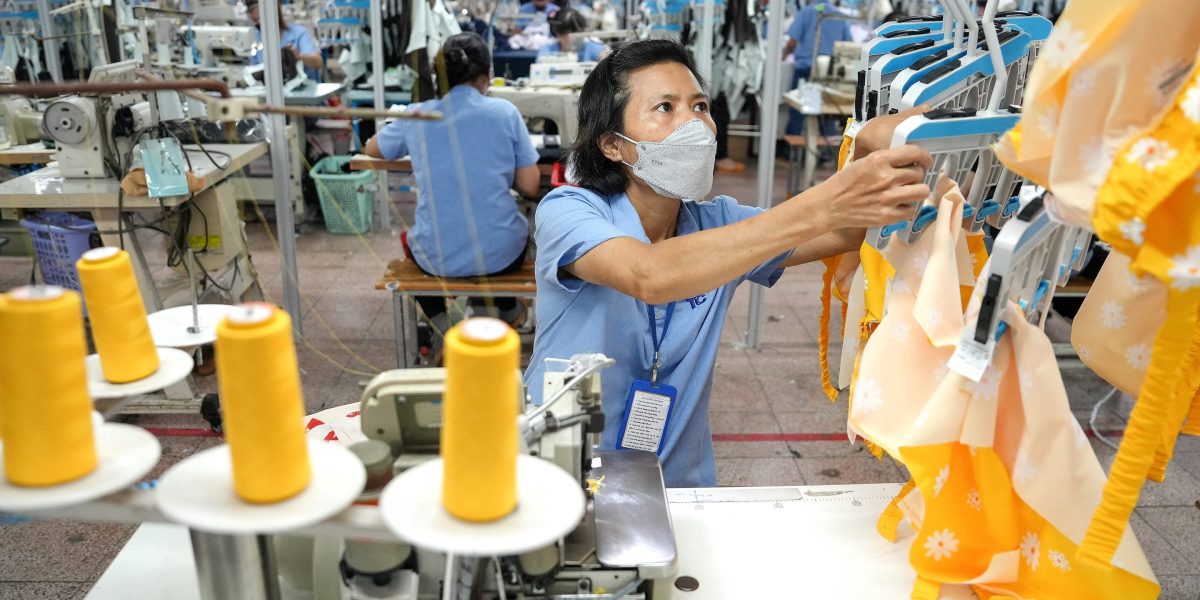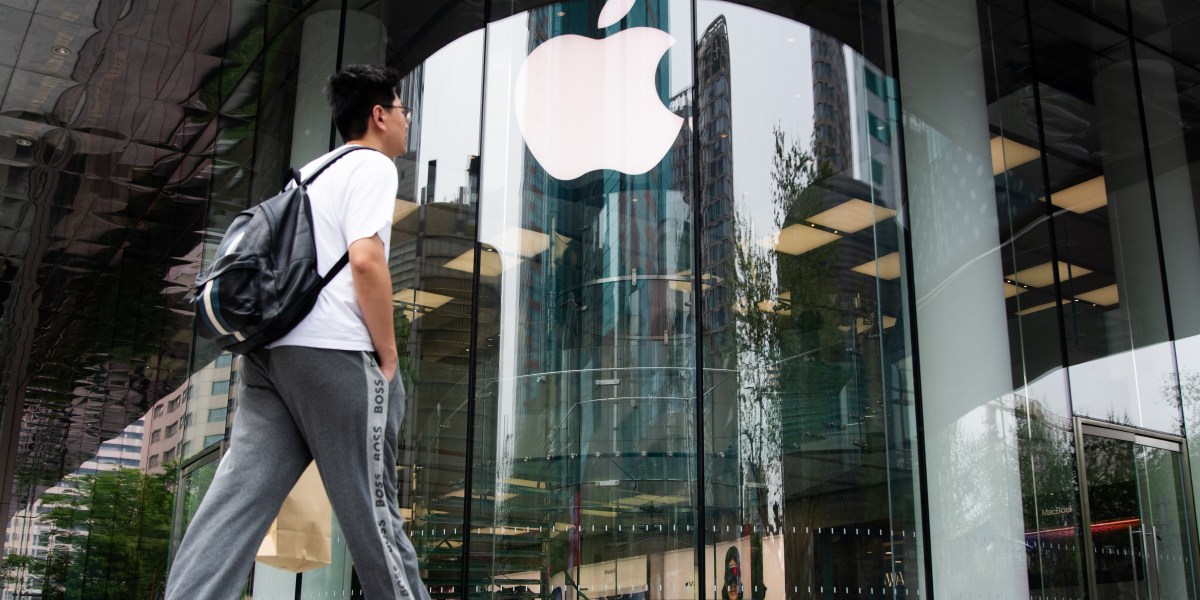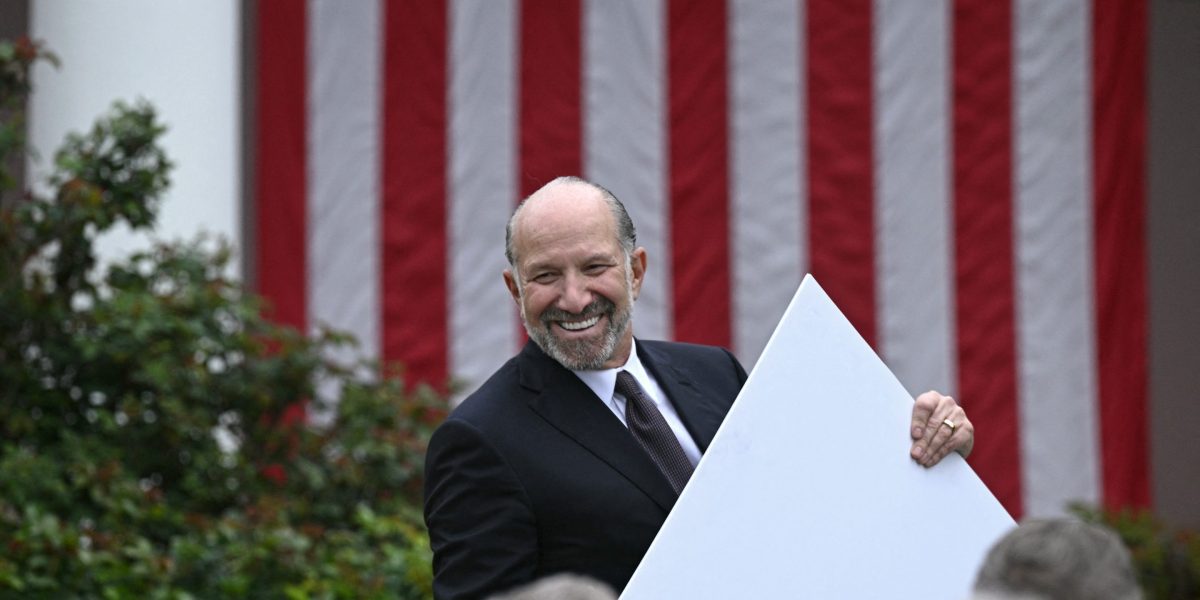

U.S. President Donald Trump, on “Liberation Day,” reserved some of his highest tariff rates for Southeast Asia. Economists expected to see some targets, like manufacturing hub Vietnam, on Trump’s tariffs list. Other targets, like neighboring Cambodia, were more surprising—and all were shocked by the steep tariffs imposed on the region, often extending into the 40% range.
April 2 set off a scramble in Southeast Asia, which has relied on exports for growth. Both Vietnam and Cambodia have already offered to cut their tariffs on U.S. imports. But that’s unlikely to mollify everyone in the Trump administration. Trade advisor Peter Navarro has accused Vietnam of “non-tariff cheating,” pointing to the country’s value-added tax and its use by Chinese manufacturers to evade U.S. tariffs. Commerce Secretary Howard Lutnick also argues Vietnam’s large trade surplus means it’s ripping off the U.S.
Yet what Navarro, Lutnick, and Trump want—completely balanced trade with countries like Vietnam—is a tall order. These countries have promised to buy more U.S. goods, like aircraft or energy. But, in truth, these Southeast Asian countries are just not wealthy enough to buy enough U.S. consumer goods to balance out their exports.
According to the World Bank, Cambodia’s GDP per capita was just slightly over $2,400 in 2023, compared with $82,800 for the U.S.
That raises the possibility that there is nothing Vietnam or Cambodia could offer that would make the Trump administration happy, making steep tariffs a permanent part of U.S. trade to Southeast Asia.
Why did Donald Trump impose such steep tariffs on countries like Vietnam, Cambodia and Laos?
Vietnam, Cambodia, and Laos all export far more to the U.S. than they import. Given the straightforward way the Trump administration calculated its “Liberation Day” tariffs—at its core, the trade surplus divided by total imports—these emerging manufacturing hubs like Vietnam were always going to get high tariffs.
“What ended up happening was that reciprocal tariffs were defined as the estimated tariff rate needed to drop the trade balance to zero,” said Adam Ahmad Samdin, a Singapore-based economist covering Asian economies at Oxford Economics.
That means Trump’s tariffs have nothing to do with what barriers Vietnam or Cambodia imposed on the U.S. For example, data from the World Trade Organization showed Vietnam’s simple average tariff rate was just 9.4%.
Both Vietnam and Cambodia export tech products to the U.S. Vietnam exports electronics like laptops, mobile phones, and video-game consoles; Cambodia exports solar panels. Both also export fast-moving consumer goods like apparel, footwear, and bags. Laos, a neighbor to Cambodia and Vietnam, exports both solar cells and fast-moving consumer goods like footwear and textiles. (Laos got a 48% tariff rate from Trump last week, while Vietnam and Cambodia got 46% and 49%, respectively).
“The reason why Southeast Asian economies have been a prime destination [for manufacturing] is really because of the relatively low labor cost relative to the amount of skills the workforce there has,” Samdin said. “The average American worker’s income is many times higher.”
What happens next?
High U.S. tariffs are a major threat to growth in Southeast Asia, which has benefited from “China plus one” approaches to supply-chain diversification.
DBS, in a recent report, suggests U.S. tariffs could reduce Vietnam’s economic growth by as much as 2.5 percentage points; the Singaporean bank initially forecast 6.8% growth for the Southeast Asian country this year.
Economists think most Asian economies will try to negotiate with the U.S., in contrast to China’s more aggressive retaliation to Trump tariffs. “U.S. exports to Asia are small in quantum, which gives the region less leverage” to retaliate, Nomura wrote in a recent report. The Japanese financial firm thinks countries will offer to buy more U.S. goods, increase investments in the U.S., and expand market access to U.S. firms.
As of now, Vietnam has offered to eliminate tariffs on U.S. imports, while Cambodia has already slashed tariffs on a range of U.S. products down to 5%.
But that’s unlikely to solve the underlying trade imbalance, as these countries don’t import much from the U.S.
Vietnam imported $13.1 billion worth of goods from the U.S. last year. In contrast, Vietnam sent $136.6 billion the other way, more than 10 times what it bought.
Vietnam’s biggest purchases from the U.S. were computers and electronic products, and machinery and instruments, according to Vietnam’s government data. The country likely imported these products in order to support its electronics manufacturing.
In a statement released late Monday, Hanoi urged the U.S. to delay the imposition of tariffs for at least 45 days to allow time for bilateral negotiations. Vietnamese Prime Minister Pham Minh Chinh signaled the country was ready to increase purchases related to defense and security, and will also look to address monetary policy concerns raised by Washington.
Cambodia and Laos, two largely agrarian economies, import even less from the U.S. Cambodia imported $321.6 million worth of products from the U.S. last year; it’s even smaller for Laos, which only imported $40.4 million worth of products from the U.S.
Conversely, Cambodia exported $12.7 billion worth of goods to the U.S. while Laos exported $803.3 million.
Cambodia’s and Laos’s top U.S. imports aren’t consumer goods like cars or electronics. Instead, it’s fuel and mechanical equipment.
“These economies don’t really have a lot of purchasing power,” Samdin said. He added these countries may not need or want what the U.S. is offering—and even if they did, it might not be “at a price point that U.S. producers would be willing to sell at.”
This story was originally featured on Fortune.com







